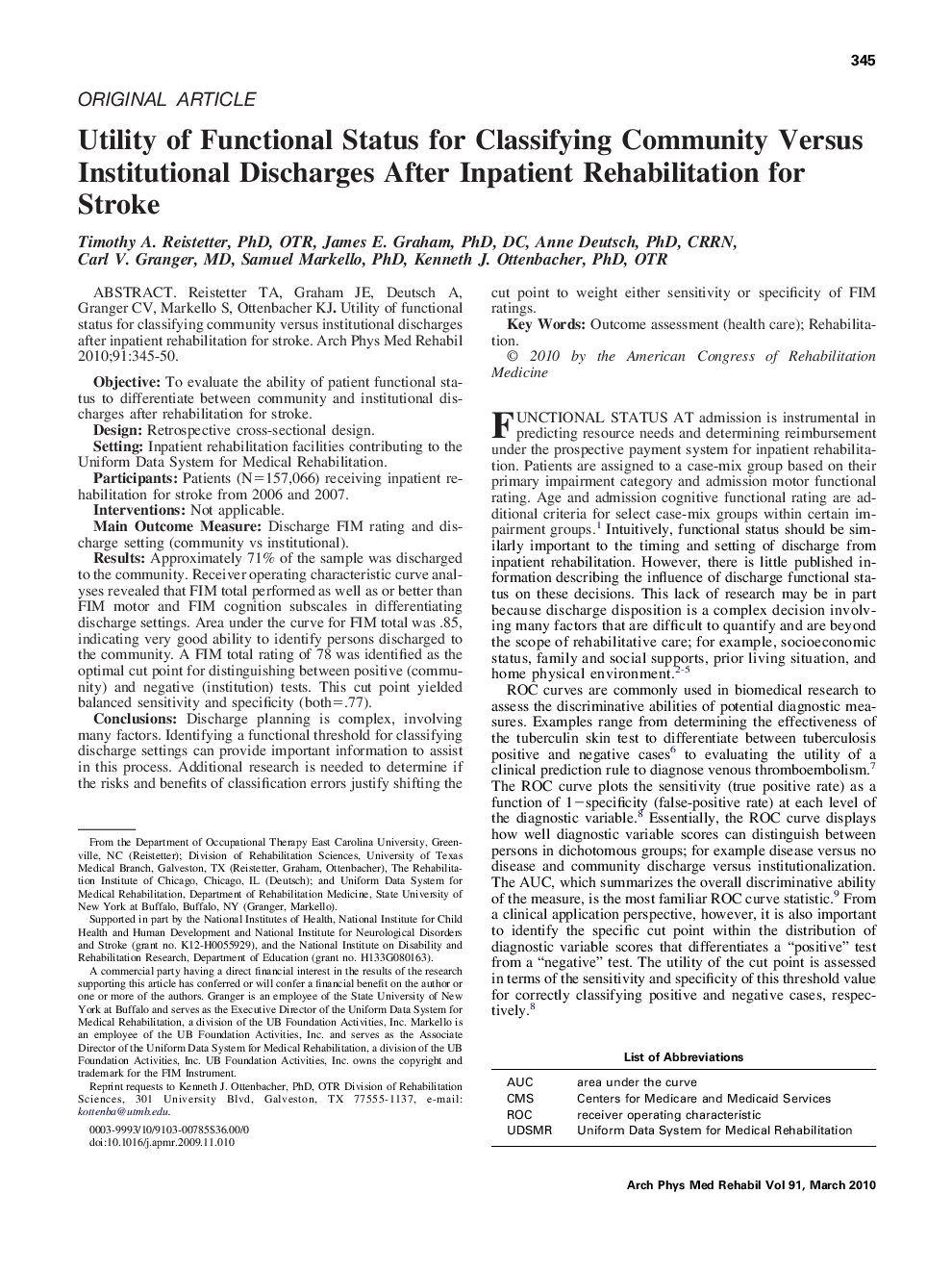| Article ID | Journal | Published Year | Pages | File Type |
|---|---|---|---|---|
| 3449208 | Archives of Physical Medicine and Rehabilitation | 2010 | 6 Pages |
Reistetter TA, Graham JE, Deutsch A, Granger CV, Markello S, Ottenbacher KJ. Utility of functional status for classifying community versus institutional discharges after inpatient rehabilitation for stroke.ObjectiveTo evaluate the ability of patient functional status to differentiate between community and institutional discharges after rehabilitation for stroke.DesignRetrospective cross-sectional design.SettingInpatient rehabilitation facilities contributing to the Uniform Data System for Medical Rehabilitation.ParticipantsPatients (N=157,066) receiving inpatient rehabilitation for stroke from 2006 and 2007.InterventionsNot applicable.Main Outcome MeasureDischarge FIM rating and discharge setting (community vs institutional).ResultsApproximately 71% of the sample was discharged to the community. Receiver operating characteristic curve analyses revealed that FIM total performed as well as or better than FIM motor and FIM cognition subscales in differentiating discharge settings. Area under the curve for FIM total was .85, indicating very good ability to identify persons discharged to the community. A FIM total rating of 78 was identified as the optimal cut point for distinguishing between positive (community) and negative (institution) tests. This cut point yielded balanced sensitivity and specificity (both=.77).ConclusionsDischarge planning is complex, involving many factors. Identifying a functional threshold for classifying discharge settings can provide important information to assist in this process. Additional research is needed to determine if the risks and benefits of classification errors justify shifting the cut point to weight either sensitivity or specificity of FIM ratings.
